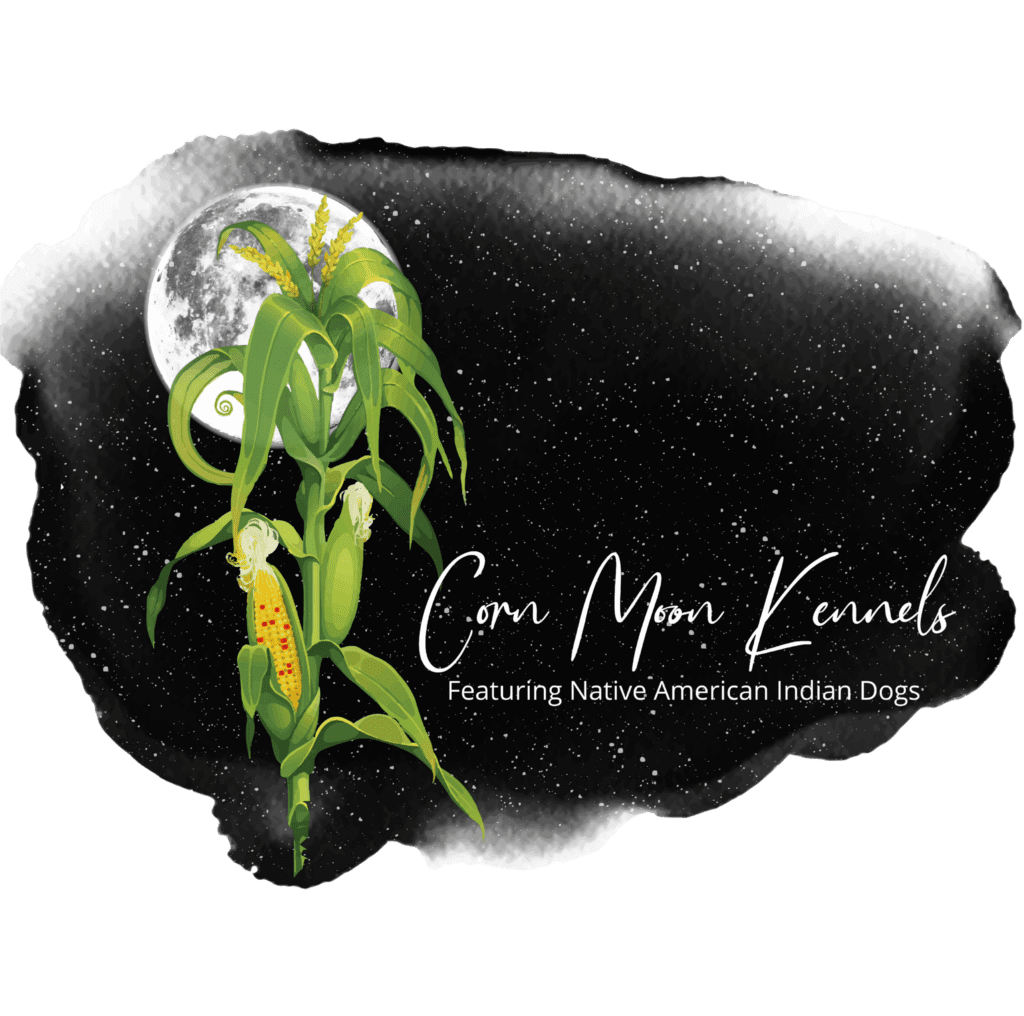About Corn Moon Kennels
Our Story
At Corn Moon Kennels, our journey is firmly rooted in our Native American Indian heritage, where our tribal ties serve as the very essence of our endeavors. Guided by the traditions, teachings, stories, and sacred ceremonies of our ancestors, the NAID Preservation Project is more than just a mission—it is a heartfelt dedication to preserving the true essence of the Native American Indian Dog.
Every NAID puppy we raise is an embodiment of authenticity and cultural significance. Our upbringing of these dogs is interwoven with our culture, from singing as they enter this world to the solemnity of naming ceremonies and traditional blessings with tobacco, sage, cedar, and sweetgrass.
Beyond breeding, we extend our devotion to our beloved dogs through an organic farm where we passionately grow a substantial portion of their nourishing food. This commitment to their well-being goes further, as we have drawn upon our expertise to develop a line of pet care products crafted from natural, organically-grown ingredients, reflecting our profound dedication to their health and happiness.
At Corn Moon Kennels, we believe in a holistic approach to dog care, ensuring that the breed’s preservation is met with the highest standards of physical and spiritual well-being. As we shape the future of the Native American Indian Dog breed, we aspire to be an inspiring example for fellow breeders and dog enthusiasts, demonstrating that heritage, love, and devotion can create a harmonious bond that transcends time and enriches lives.
Get to Know Us
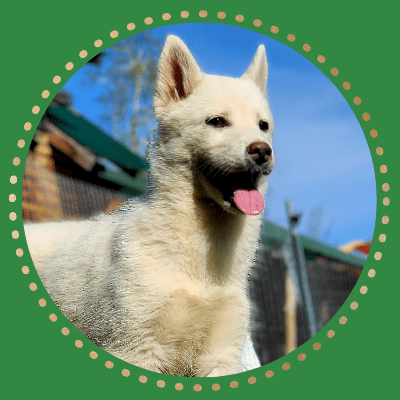
Yaretzi
“ALWAYS LOVED”
Yaretzi has a remarkable history. She comes from Washington’s P’Squosa Tribe and Mexico’s Mixtecos, who call themselves “The People of the Rain.” Her Mixtec ancestors traveled to Washington hundreds of years ago and joined with the P’Squosas in the Chelan Valley. Tribal dogs with this type of diverse history are quite rare and special.

Omba
“RAIN”
Omba is a rare and beautiful village dog from a highly prized stock out of a village in Alaska’s interior of Seppala and Hedlund landrace lines. These lines were critical for the development of the NAID at its beginnings, dating all the way back to Kenai, a NAID foundation dog. Omba is a direct descendant of Togo and Balto.

Haklo
“LISTEN”
Haklo is a descendant of Fantastic Fred of MVK and Hakata We, some of the most important names in the foundations of the NAID breed. His other lineage includes rare and important Tsalagi lines from Oklahoma tribal breeders.

Kana
“GRACE”
Kana is one of our most genetically diverse dogs! She has many great-great-grandparents that were wild-captured Carolina Dingos of Turtle Island. She, like Haklo, carries a lineage to Fantastic Fred and Hakata We of Majestic View Kennels.
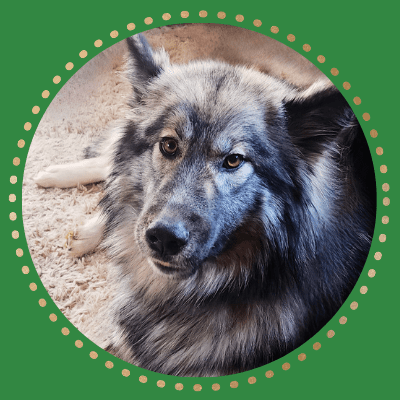
N'Shee
“RESTORATION”
N’Shee is one of the last true Native American village dogs. She carries another very important lineage for the survival of the NAID – she is a descendant of Majestic View’s Zakai, Ohapi Pui, Hakata We, and Ultimate Ukiahya.
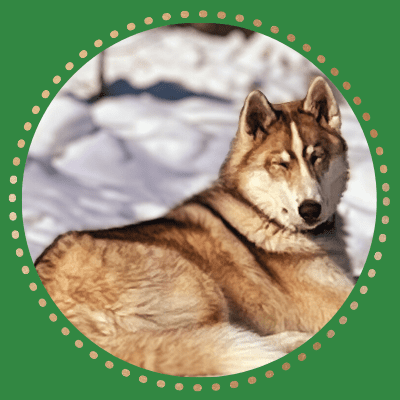
Chenoa
“WHITE DOVE”
Chenoa is an Omba x Haklo son. He has become a very important part of our program because he merges two lineages that are so crucial to the survival of the authentic Native American Indian Dog.
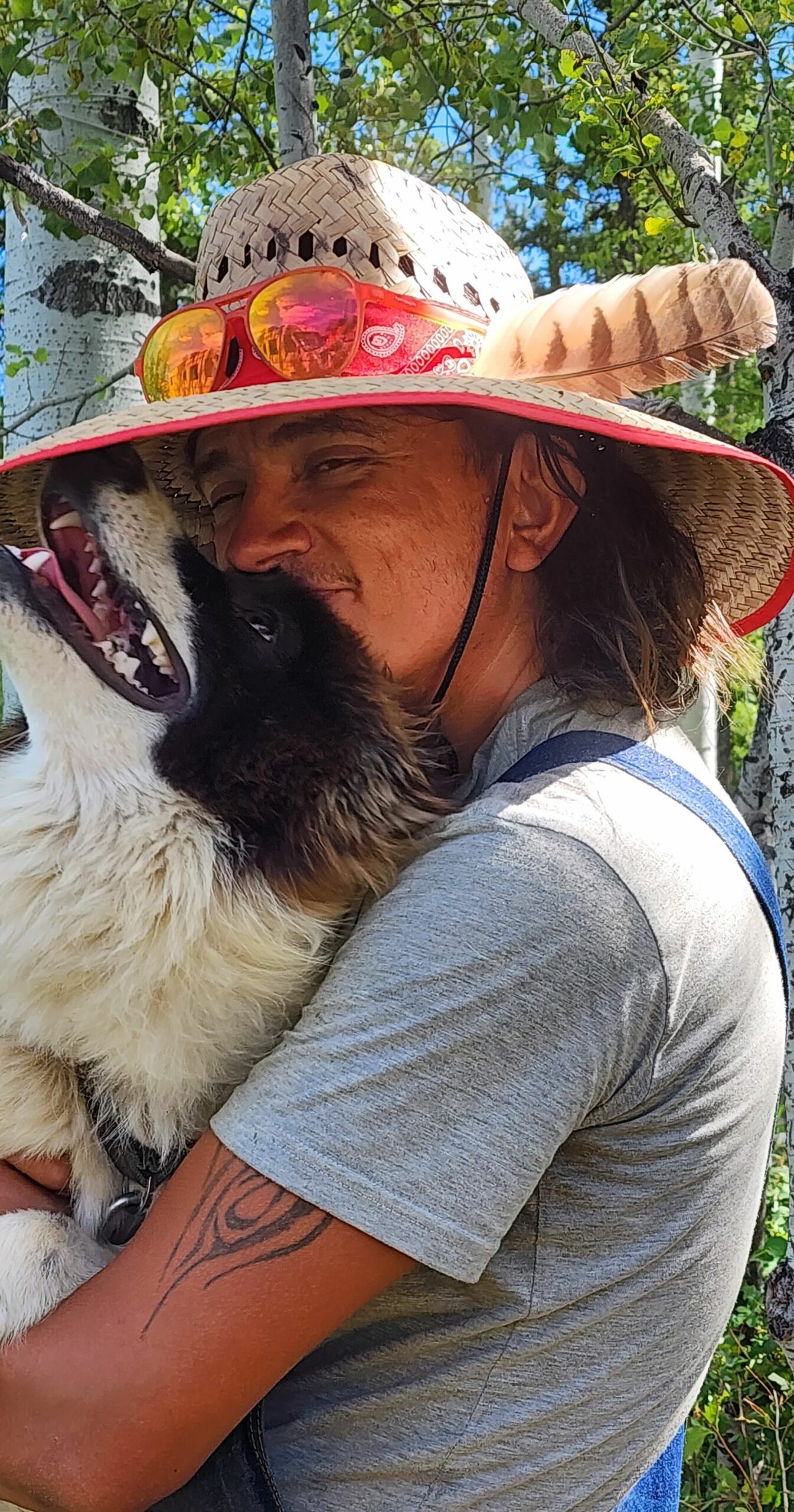
Uri
Hello, I’m Uri, and while you might only meet me when you pick up your puppy, I’m deeply involved as a full-time farmer and operations manager of our family farm, Straight Out The Mud. My dedication ensures our farm produces everything needed for raising happy, healthy dogs. Even if we don’t interact much, rest assured I know you and your family, following your journey every step of the way. My passion for dogs drives me to work tirelessly behind the scenes, making sure all gears turn smoothly, ensuring the best for our beloved animals. I’m committed to supporting you and the dogs wholeheartedly.
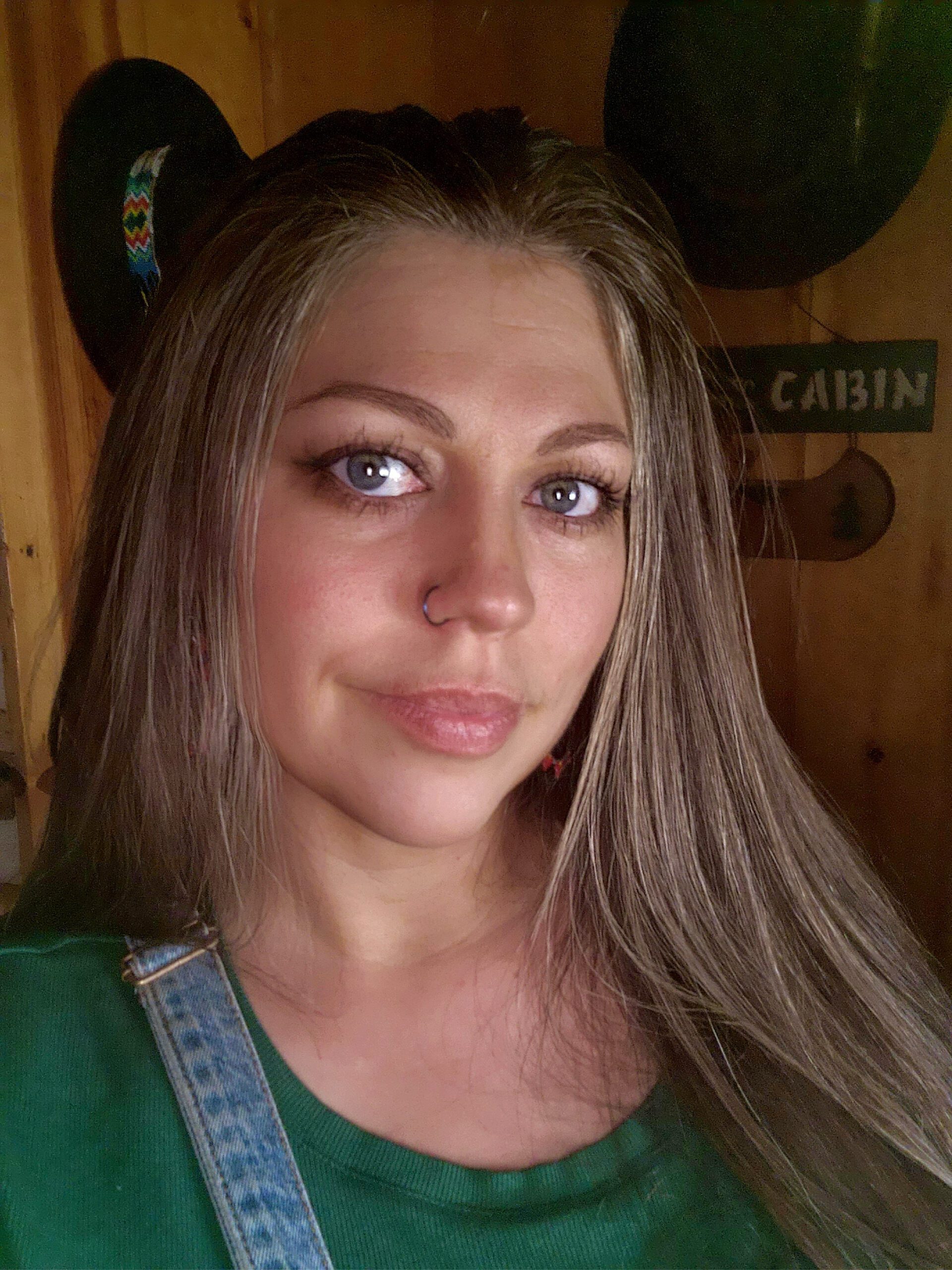
Rebecca
As a dedicated tribal breeder and passionate advocate for preserving the Native American Indian Dog breed, I embrace the profound cultural significance they hold. Being one of the few tribal breeders working with this remarkable breed, I take pride in providing the most authentic Native American Indian Dogs to enthusiasts, ensuring their heritage endures. Alongside raising your puppy until they join your home, I take on various roles, serving as your resource, coach, voice of reason, and cheerleader throughout your journey. I’m here to support and guide you every step of the way, ensuring a fulfilling and joyful experience with your beloved puppy.
Mission
Our mission is to preserve the ancestral legacy of the Native American Indian Dog breed with unwavering dedication, utmost integrity, and a profound respect for its cultural significance. Through meticulous breeding practices, rigorous genetic research, and responsible stewardship, we strive to safeguard the breed’s unique characteristics, temperament, and historical lineage. We are committed to upholding the highest standards of authenticity and breed purity, ensuring that future generations can experience and appreciate the genuine essence of these remarkable dogs. Our relentless pursuit of preservation is driven by a deep understanding of the breed’s importance and an unwavering passion to honor its heritage. By fostering education, collaboration, and ethical breeding practices, we aim to inspire others to join us in our mission and contribute to the continued existence and thriving legacy of the authentic, original Native American Indian Dog.
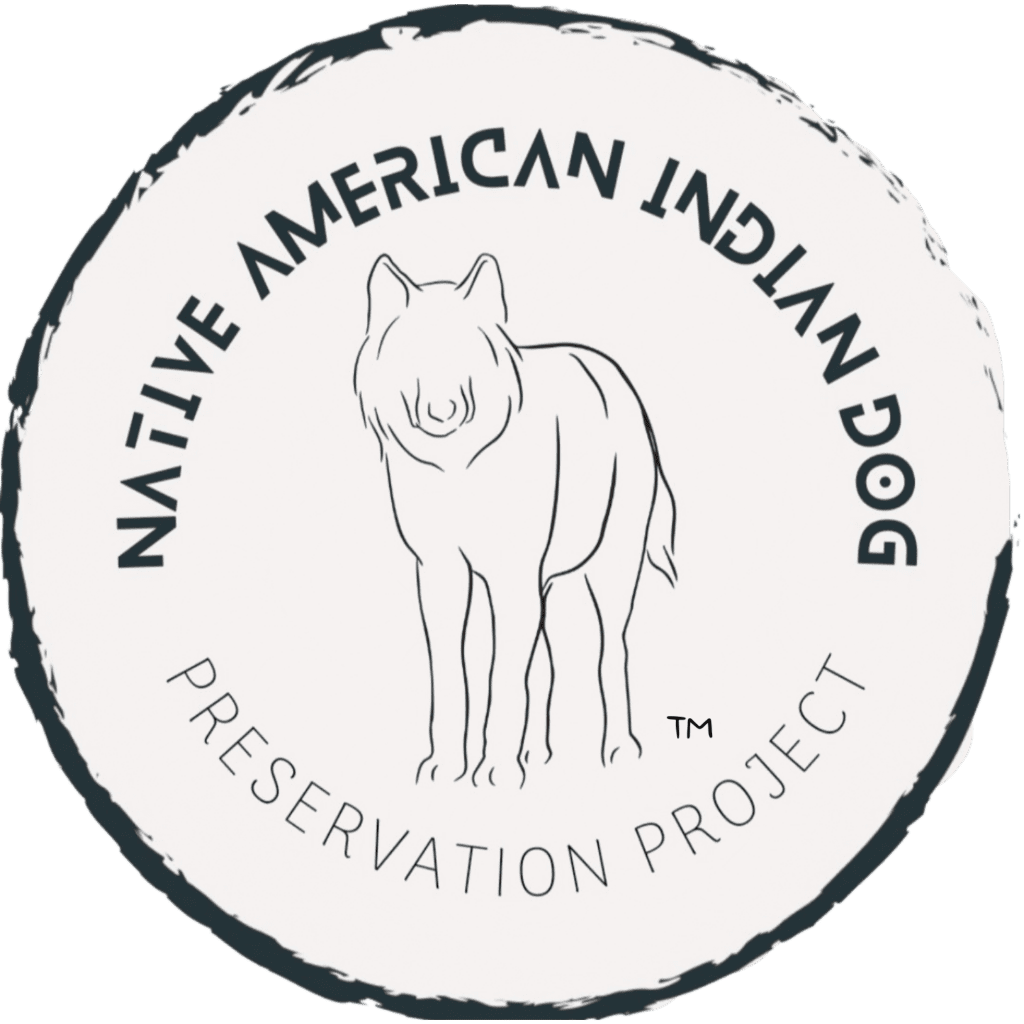
Native American Indian Dog Preservation Project, Est. 1995
Native American Indian Dog Official NAIDPP Standard
© Copyright 2023, Native American Indian Dog Preservation Project
The goals and purposes of this breed standard include furnishing guidelines for breeders who wish to maintain their breed’s quality and improve it, advancing this breed to a state of similarity worldwide, and acting as a guide for judges.
Breeders and judges must avoid any conditions or exaggerations detrimental to this breed’s health, welfare, essence, and soundness and take responsibility to see that these are not perpetuated.
Any departure from the following should be considered a fault, and the seriousness with which the fault should be in exact proportion to its degree and its effect upon the health and welfare of the dog and on the dog’s ability to perform its traditional work.
HISTORY
The Native American Indian Dog is a composition of the most ancient dog breeds known to Native America. Its name is an homage giving credence and recognition to no less than 974 tribes that occupied the lands during the pre-Columbus era. Though the origins of the native people and their dogs are debated among different historians, they were undoubtedly in the region for no less than 30,000 years. It is known that the breed is descended from several Native American dogs that are now extinct, including the Hare Indian Dog and the Salish Wool Dog, as well as some native wild canids, some of which are rare but still living today, such as the Carolina Dingo, the Coyote, and the Gray Wolf. Tribes throughout the continent used them for many diverse tasks, including but not limited to herding, guarding, protection, pulling both sleds and travois, babysitting, packing, assisting with hunts, and companionship. When Europeans settled the North American continent, many Native American Indian Dogs began mixing with outside blood. With the Native American Indian peoples being pushed out of their homes lands and moved onto reservations, most species of Native American Indian Dogs known to the continent would quickly become extinct at the beginning of the 20th century, with only a few hundred remaining in existence and carefully guarded by the few tribes that still had them as the century neared its close. However, the breed was “rediscovered” in the 1970s and 80s, and a new interest in its preservation surged. In 1995, the Native American Indian Dog Preservation Project was established as a group of tribal breeders who sought to preserve this important – and often overlooked – part of Native American Indian culture. Since then, the NAID Preservation Project has worked to maintain with as much integrity and authenticity as possible, and with the remaining lines that are currently available, the Native American Indian Dog in its original and pure state.
GENERAL APPEARANCE
The Native American Indian Dog is a powerfully yet delicately built paradox with superb athleticism. A substantial dog with a proud chest, a muscled body, and a thick, double coat of coarse guard hairs protects a soft, wooly undercoat. He must have sturdy bones, substantial legs, large, durable feet, and a soundness of all the other physical characteristics necessary for strength, tenacity, hard work, and endurance. The Native American Indian Dog stands well-built upon his feet, giving him the appearance of occupation and awareness. His gait is steady, calculated, expertly balanced, and tireless. He does not pursue speed, although quick; instead, he must be capable of making tight maneuvers and carrying or pulling heavy loads for many miles at a steady, unwavering pace.
When judging the Native American Indian Dog, his overall suitability for being a loyal and devoted companion and assistant to his human counterpart in day-to-day life must be given first consideration. The degree to which a dog is penalized should be in direct proportion to how much the particular fault would hamper the dog from performing his task.
CHARACTERISTICS
An adoring and dotingly loyal breed, the Native American Indian Dog is anything but a one-person dog. He epitomizes a tender, warm, and devotedly loving companion. He is playful, sensitive, and bright when he is young. When he is fully mature, he is highly intuitive and spiritual; an imposingly splendid and majestic companion in his dignity and grace.
CONTAINMENT – His remarkable intelligence and pack-loving nature require that he always have a companion. Another dog is preferable for the Native American Indian Dog that must be left alone for an extended time. The Native American Indian Dog will not generally do well in an apartment or condo setting and, due to his wild nature, will require a fence of at least 6’ high with ample room to run and play.
INTELLIGENCE – He exhibits an extremely high level of intelligence with the keen ability to learn, remember, utilize deductive reasoning, and problem-solving.
TEMPERAMENT – He is a highly social and peaceful creature who is anything but antagonistic or hostile. He loves to play and tumble all day and will generally back down when met with the aggression of a strange and quarrelsome dog. The exception to this rule is his devoted, loyal, and protective nature toward his pack, rendering him a fearless defender of his human and animal companions in situations where danger or adversity arises. He is even more particularly protective of young, helpless children. He is known for his versatility and learning capacity, which makes him the ideal family companion.
LIFE EXPECTANCY – The Native American Indian Dog has an average life expectancy between 14-17 years. There is very little, if anything, known or documented regarding congenital defects or genetically related health issues.
HEAD
The head is broad and profound but never oafish, inelegant, or graceless. It should be in perfect proportion to the rest of the dog.
SKULL – The skull is broadest between the ears, well-shaped, tapered, and somewhat elongated toward the muzzle. An almost perfectly triangular head is a desirable characteristic. The skull should narrow and angle downward slightly near the eyes, with gently to moderately angular cheeks.
MUZZLE – A well-shaped, tapered, somewhat long muzzle is desirable.
TEETH – The teeth are white, straight, and tight, and the teeth should meet together for a precise, scissor-like bite.
Faults: Overshot or undershot bite.
EYES – Almond-shaped, slightly to moderately large, and set obliquely. The expression is soft, knowing, and kind, indicating a doting nature. The eyes may be Oka (blue), Tanchi (yellow to yellow-green), Luak (amber), or Nita (brown). The eyes should be bright, with the pure essence of play, frolic, and mischief. There must be an almost human-like intelligence and a soul-searching ability within the gaze. All should be visible in the eye of the Native American Indian Dog.
EARS – The ears may range from small with rounded tips to large and long with pointed tips with the potential to look slightly out of proportion to the size of the head. They are triangular in shape and erect, set wide apart at the back of the skull. When erect, the ears should point forward. When the dog works or playfully interacts with his human companion, the ears are often somewhat folded against the skull.
NOSE – The nose pad may be black, brown, red, spotted, or striped (snow nose), which is common and is not considered a fault.
NECK
Strong and moderately arched.
FOREQUARTERS
SHOULDERS – The shoulders are straight, erect, and proud, with a slight slope.
FORELEGS – The forelegs are sturdy and thick and may appear somewhat heavy. They are well-muscled, indicating strength and agility. The toes point slightly outward from the oversized paws, which may give an appearance of no hocks. The toes are webbed, demonstrating an ability to travel expertly through water and snow.
BODY
The Native American Indian Dog has two distinct body types: 1. Miko (giant) and 2. Imoma (standard).
MIKO – The Miko Native American Indian Dog has a somewhat long body and long back with a proportionately sized long leg to support and balance the body’s frame. A broad, deep chest to support a sizeable muscular heart and excellent lung capacity is essential. These dogs were used in a working capacity from dawn until dusk, assisting in hunting large game and pulling loaded travois carrying cargo weighing up to 250 pounds. The top line should have a slight slope at the withers for more significant movement, flexibility, and agility.
IMOMA – The Imoma Native American Indian Dog has a shorter leg and a short but robust back with a sloping shoulder for superb mobility. A deep chest is essential for a considerable lung capacity and pronounced endurance. The Imoma Native American Indian Dog is tailored to hunt small, rapidly moving game and is simultaneously contrived to carry packs loaded with up to 50 pounds of supplies for no less than 12 hours per day.
HINDQUARTERS
The hindquarters should be broad and powerfully muscled through the thighs, tapering to trim and agile hocks.
HIPS – The hips should be broad and square, ideal for pulling or carrying large amounts of weight. The movement, at a trot or a lope, should appear easy, gliding, and free-flowing, giving off an air of effortlessness.
HIND LEGS – The leg follows a straight line from the hip to the hind toes. The stifles are moderately bent, and the hock joints are strong, somewhat bent, and let down. When viewed from behind, the hind legs should be vertically standing and move appropriately in line with the movement of the front legs, not too wide or too close at any gait.
Faults: Dewclaws.
FEET
The feet are large and appear slightly oversized. They are generous but tight, profound with well-cushioned, tough pads and arched, webbed toes, giving them a strong, sturdy, but nimble appearance. There is a defensive extension of hair between the toes.
TAIL
The tail is set following the natural line of the spine. It is generously coated and appears plume-like to waterfall-like. It should be full, bushy, and hang relaxed in line with the hind legs. A slight curl of the tail is common and acceptable. The tail may be carried erect when the dog is relaxed and not working.
Faults: Tail carried over the back.
Disqualifications: Tail snaps or curls tightly against the back.
COAT
The Native American Indian Dog is double coated, with a thick, coarse guard coat (which must never be excessively long or soft) and a dense, oily, somewhat wooly undercoat one to two inches long. The guard hairs vary in length, and there are two recognizable coat lengths: 1. Kallo (long-somewhat wooly) and 2. Ik Kallo (medium-plush).
KALLO – The Kallo-coated Native American Indian Dog’s coat is usually the longest around the neck, down the back, over the croup, on the breeching, and on the tail. The coat tends to be shorter and somewhat thinner in warm climates. The coat is untrimmed.
IK KALLO – The Ik Kallo-coated Native American Indian Dog’s coat is luxuriously plush and even in length over the entire body, with the potential for the fur on the tail to be slightly to moderately longer than the coat on the rest of the body, giving the tail a cascading and plume-like air. The coat tends to be shorter and somewhat thinner in warm climates. The coat is untrimmed.
COLOR
Colors range from solid white to light gray through the intermediary shadings to black, sable, shadings of sable, to red and shadings of red, to a broken pattern of various colors on a white background known as “Spirit Dog.” Color combinations are acceptable in undercoats, points, and trimming. White or cream should be present on the underbody, parts of the legs and feet, and part of the face markings. The markings should be either cap-like or mask-like on the face. A white blaze or stripe on the forehead, a broken or unbroken white collar, or a spot on the nape is acceptable, attractive, and quite common. Broken color extending over the body in areas of uneven splashing is classic and desirable. Solid colors are rare but allowable. The colors and patterns are classified as 1. Issitushi (spirit dog), 2. Nashoba (agouti or various gray shades), 3. Shilup (white), 4. Homma (red), and 5. Yanash (sable).
HEIGHT & WEIGHT
MIKO – The ideal height and weight for males are 25”-30” at the withers and 85-120 pounds; for females, it is 22”-26” inches at the withers and 60-80 pounds.
IMOMA – The ideal height and weight for males are 23”-27” at the withers and 65-85 pounds; for females, it is 21”-25” at the withers and 45-55 pounds.
Regardless, size consideration should never outweigh that of type, proportion, and function. When all else is equal, the dog nearest the ideal size and weight is preferred.
GAIT
The gait is unwavering, stable, and secure, showing agility and athleticism despite the size. From the side, there is a strong drive from the hindquarters, and the forequarters have a seamlessly smooth and gliding reach. From the front and rear, the legs move faithfully, not too close or too wide, though, at a fast trot, the feet will converge more narrowly toward a center line.
Faults: A gait that is stilted or inefficient in any way.
DISQUALIFICATIONS
A dog with a Disqualification must not be considered for placement in a confirmation event and must be reported to the NAIDPP.
Unilateral or bilateral cryptorchid.
Extreme viciousness or shyness.
Albinism.

